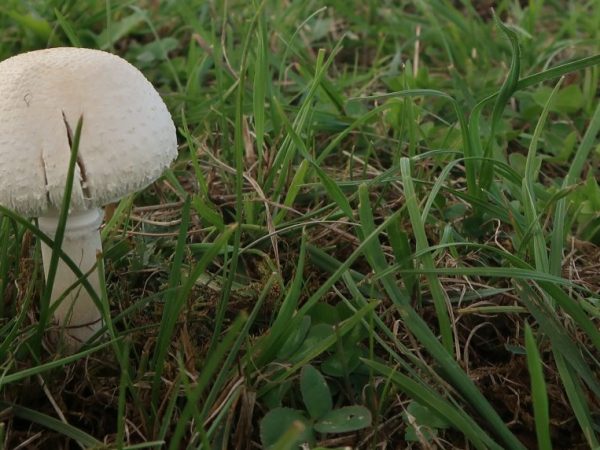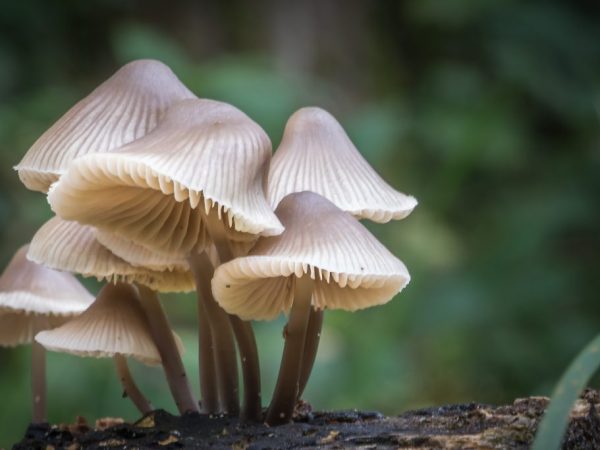Description of meadow mushrooms
Mushrooms grow not only in forests, but also in meadows, some of them have adapted to this. Meadow mushrooms, although represented by a smaller species diversity, are also able to satisfy gourmets with their excellent taste.

Description of meadow mushrooms
Spread of meadow mushrooms
Outside forests and forest edges, mushrooms also grow in river valleys overgrown with young bushes, and on roadsides, fields and polygons, of course, in meadows and pastures.
The distribution depends on the composition of the soil, types of vegetation and relief. The more nutrients in the soil, the more diverse the vegetation, the more conditions for the appearance of certain types of fungi here.
Mushroom places in a meadow are determined by the proximity of water bodies, the presence of slopes to it or ravines. Such features contribute to the emergence of mushroom "settlements".
In addition, the treeless meadow area is often used for grazing animals, which also plays a positive role in the growth of fungi. Natural fertilizers left by them and the assistance of animals to the spread of mycelium, the spread of spores, create favorable conditions for their growth and reproduction.
Edible species
The species diversity of meadow mushrooms is significantly inferior to its forest relatives:
- Champignon: they grow in small groups in summer and warm autumn. They have a cap with a diameter of up to 20 cm, milky-white, conical, and not spherical, as in the common champignon. The leg is hollow and high - up to 10 cm, while in the representative of the common champignon species, it is dense and small. The pulp is white, when damaged it acquires a yellowish tint, with a pleasant mushroom smell and nutty taste.
- Meadow mushroom: a small mushroom with a red-brown cap, lightening to a yellowish tint in summer. Its diameter is from 3 to 9 cm, the edges are uneven, the center is slightly convex. The leg is thin, slightly tapering upward. The pulp is thin, with a characteristic almond aroma, white, with a slightly yellowish tinge, color. On the cut, the color does not change.
Irina Selyutina (Biologist):
Meadow honeydew can form characteristic rings during fruiting. It is often confused with wood-loving collibia, although they are not very similar, and moreover, they grow in different conditions. But as the saying goes, "someone else's soul is dark." Why is this mushroom mistaken for a completely different one? Perhaps due to carelessness or inexperience. In addition to kolibia, the whitish gorse claims to play the role of meadow mushroom (meadow marasmius). Here the consequences can be much more serious, because:
- this species contains in its pulp a large amount of muscarine (even more than in the red fly agaric);
- the ripening of the fruit bodies of the talker goes almost simultaneously with the meadow mushroom;
- species grow in similar conditions;
- the sizes of the fruit bodies are similar.
- Raincoats: The name of this meadow mushroom indicates a period of intensive growth - after heavy rains. The spherical cap reaches a diameter of 2 to 4 cm. Its surface is white with a yellowish-greenish tinge, covered with shallow grooves.The larger its cap, the less pronounced the leg. The flesh of the young is white, turns yellow as it grows.
- Dung bearers: quite edible at a young age, with a characteristic name indicating the habitat. They have an unusual elongated shape. The white dung beetle cap is up to 10 cm in diameter, covered with small scales. The leg can reach a height of 15 cm, has a thickening at the base, and is hollow inside. It grows both on humus soil and in animal manure itself. The dung beetle is gray, or inky smaller, with a shaggy and scaly cap. Its main and interesting feature is that the plates of old fruiting bodies turn into a mass that resembles ink liquid.
- Row lilac-legged, or blue-legged: a cream-colored hat, up to 16 cm wide, in a young one it is convex. As it grows, it becomes flatter, with tucked edges. The short and thick leg has a purple hue. The pulp is of the same greyish-lilac color, which does not change it on the cut.
- Blackening flap: refers to conditionally edible species. Due to its unusual shape and lack of a leg, it is often confused with a bird's egg. The mushroom body is 3 to 6 cm in diameter, shaped like a ball. At a young age, it is white, then it acquires a yellow tint, and as it ages, it darkens to black.
Inedible and poisonous species

Poisonous mushrooms cause severe poisoning
Along with edible mushrooms, poisonous mushrooms are also found in meadows.
- Yellow-skinned champignon: especially dangerous because it can be easily confused with edible members of the genus. The main difference is that when the fruit body is damaged, the pulp becomes yellow, and at the base of the leg it is bright yellow, while in the present it turns pink or reddens. In addition, it has an unpleasant odor, which intensifies if you pour boiling water over it.
Irina Selyutina (Biologist):
Champignon yellow-skinned, or reddish belongs to the group of medium-poisonous mushrooms. This means that it can create quite serious problems in the work of the gastrointestinal tract if accidentally ingested. Statistics say that approximately 50% of all poisoning caused by various inedible or poisonous types of champignons falls on this particular species.
- Whitish talker: no less dangerous poisonous mushroom. It has a convex, smooth, white saucer-shaped head. Its diameter is 3-4.5 cm. The leg is fleshy, up to 4 cm long. An important feature of it is the absence on the fracture of the leg of the milky liquid secreted by edible specimens.
- Theolepiota golden: this species is considered inedible. The hat of a young individual resembles a hemisphere; as it grows, it becomes more extended, maintaining a bulge in the center. Its color is golden yellow with an orange tint, and the surface is bumpy, with fringed edges. The leg is straight with a thickening at the mycelium, sometimes reaching 20 cm in height. Its surface is matte with longitudinal wrinkles and a hanging ring of the bedspread. It is capable of accumulating cyanides in its pulp, which cause food poisoning.
- Hygrocybe yellow-green: bright mushroom of acid yellow color. It is noticeable in the meadows with its bright flat hat of adults. The surface of the cap is sticky and damp. The pulp of a fine structure, when pressed, easily crumbles, emitting a characteristic mushroom aroma. The leg is thin and just as fragile, slightly lighter than the cap. Considered inedible with low palatability. Can cause digestive upset.
To protect yourself and your loved ones from poisoning with poisonous mushrooms, you should not put a mushroom in the basket that causes the slightest doubt about its edibility.
Conclusion
Green meadows with nutrient-rich soils will delight, although less diverse, but equally tasty and nutritious representatives of the mushroom kingdom, the main thing is to know what you are collecting.



